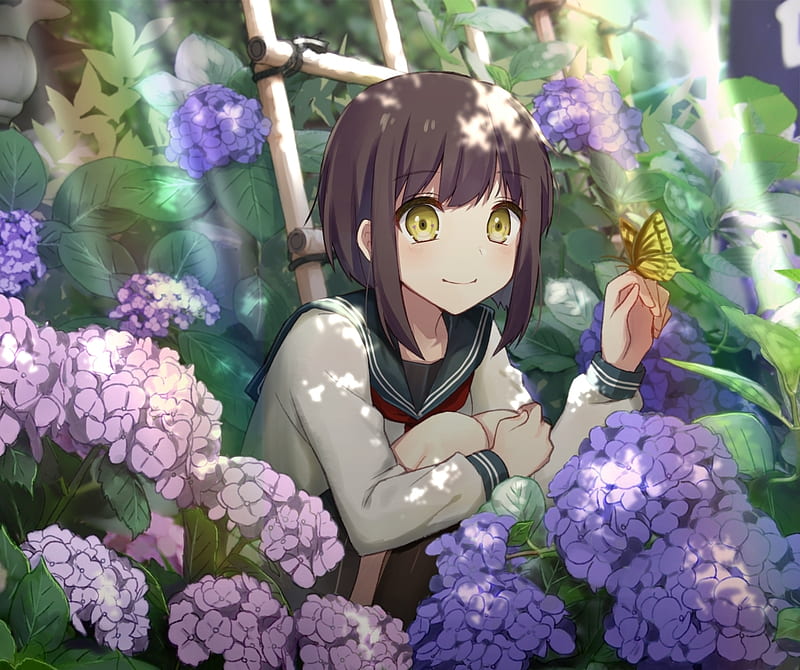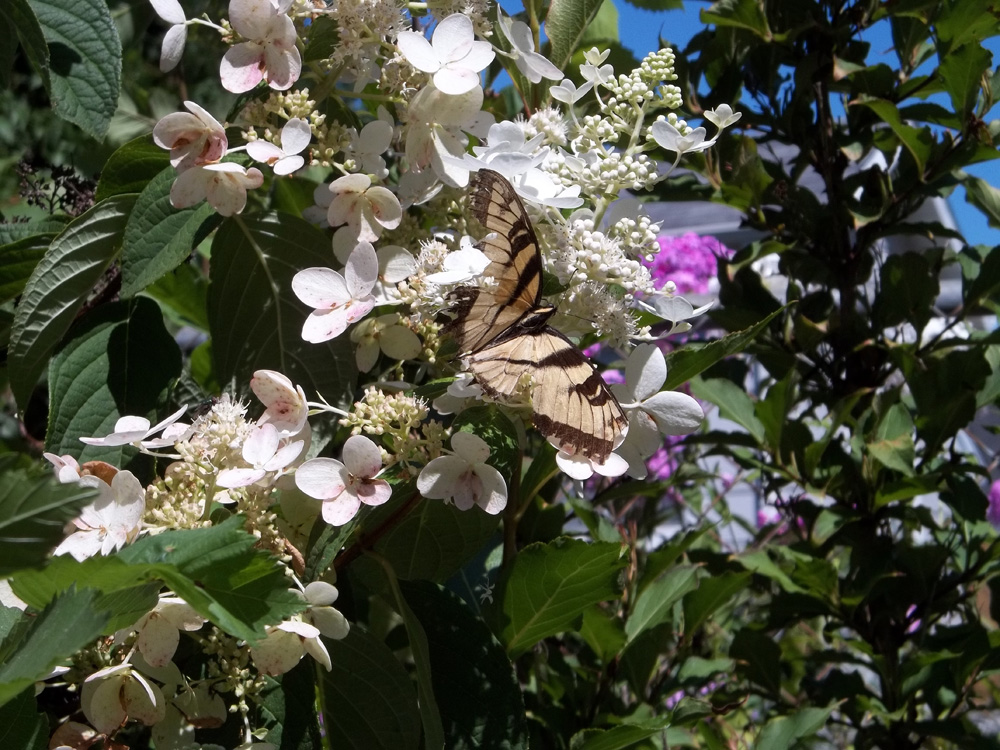The Hydrangea Butterfly: A Beautiful And Mysterious Flower
The Hydrangea Butterfly is a beautiful and mysterious flower that is native to Japan. It is also known as the "Iron Butterfly" or "Higanbana". The flower is known for its large, delicate petals that resemble the wings of a butterfly. The Hydrangea Butterfly is a member of the Hydrangea family and can grow up to 6 feet tall. The flowers are typically white, pink, or purple.
The Hydrangea Butterfly is a popular flower in Japan and is often used in traditional Japanese gardens. The flower is also associated with death and mourning in Japanese culture. This is because the Hydrangea Butterfly blooms in the fall, which is the time of year when many Japanese people traditionally visit the graves of their loved ones.
The Hydrangea Butterfly is a relatively rare flower and can be difficult to find outside of Japan. However, there are a few nurseries in the United States that sell the flower. If you are lucky enough to find a Hydrangea Butterfly, be sure to give it a place of honor in your garden.
Main Content
Here are some more interesting facts about the Hydrangea Butterfly flower:
- The Hydrangea Butterfly is a deciduous plant, which means that it loses its leaves in the winter.
- The flowers of the Hydrangea Butterfly are pollinated by bees and butterflies.
- The Hydrangea Butterfly is a relatively slow-growing plant. It can take several years for the plant to reach its full size.
- The Hydrangea Butterfly is a relatively hardy plant and can tolerate a wide range of climates. However, it does best in areas with moist, well-drained soil.
- The Hydrangea Butterfly is a relatively low-maintenance plant. It only needs to be watered regularly and fertilized once a year.
Conclusion
The Hydrangea Butterfly is a beautiful and mysterious flower that is sure to add a touch of elegance to any garden. If you are looking for a unique and rare flower, the Hydrangea Butterfly is a great option.
If you're looking for a hydrangea that's sure to attract butterflies, then the Hydrangea paniculata 'Butterfly' is the perfect choice for you. These stunning shrubs produce huge, elegant cone-shaped panicles of loosely clustered pure white blooms that sway in the breeze. The flowers are highly fragrant and are loved by butterflies and other pollinators.
To learn more about the Hydrangea paniculata 'Butterfly', I recommend visiting . This website has a wealth of information about this hydrangea, including its growing requirements, care tips, and pest and disease prevention. You can also find photos of the plant in bloom, as well as helpful articles on how to attract butterflies to your garden.
FAQ of hydrangea butterfly
- What is a hydrangea butterfly?
A hydrangea butterfly is a type of shrub that is known for its fragrant, butterfly-attracting flowers. It is native to Asia and can grow up to 10 feet tall. Hydrangea butterflies have dark green leaves and panicles of white, pink, or purple flowers that bloom in the summer.
- How do I care for a hydrangea butterfly?
Hydrangea butterflies are relatively easy to care for. They need full sun to partial shade and moist, well-drained soil. Water them regularly, especially during hot, dry weather. Fertilize them once a month with a balanced fertilizer during the growing season. Prune them in the spring to remove dead or damaged wood.
- What are the common pests and diseases of hydrangea butterflies?
The most common pests of hydrangea butterflies are aphids, scale insects, and spider mites. These pests can be controlled with insecticidal soap or neem oil. The most common diseases of hydrangea butterflies are leaf spot, powdery mildew, and rust. These diseases can be prevented by watering the plants at the base and avoiding overhead watering. If the plants do become infected, treat them with a fungicide.
- How do I propagate hydrangea butterflies?
Hydrangea butterflies can be propagated by division, cuttings, or layering. Division is the easiest method. Simply dig up a mature plant in the spring or fall and divide it into smaller sections. Plant the divisions in well-drained soil and water them regularly. Cuttings can be taken in the spring or summer. Choose a healthy stem and cut it below a node. Remove the lower leaves and dip the cutting in rooting hormone. Plant the cutting in well-drained soil and keep it moist. Layering is a more difficult method, but it can be successful. In the spring, bend a stem down to the ground and bury it. Secure the stem in place with a U-shaped piece of wire. The stem will eventually root and can be separated from the parent plant.
- How long do hydrangea butterflies live?
Hydrangea butterflies can live for 20 to 30 years if properly cared for. They are a beautiful and long-lived addition to any garden.
Image of hydrangea butterfly
5 different images of "hydrangea butterfly" from Pinterest:
- A close-up of a hydrangea flower that looks like a butterfly. The petals are arranged in a symmetrical pattern, and the center of the flower is a deep blue color.

- A group of hydrangea flowers that are arranged in a circle. The flowers are all different shades of blue, and they look like butterflies fluttering in the wind.

- A hydrangea flower that is growing on a tree. The flower is white with pink edges, and it looks like a butterfly perched on the branch of the tree.
- A hydrangea flower that is being held by a person's hand. The flower is a deep purple color, and it looks like a butterfly that is about to take flight.

- A hydrangea flower that is being used as a centerpiece on a table. The flower is a light pink color, and it looks like a butterfly that is resting on the table.


Post a Comment for "The Hydrangea Butterfly: A Beautiful And Mysterious Flower"